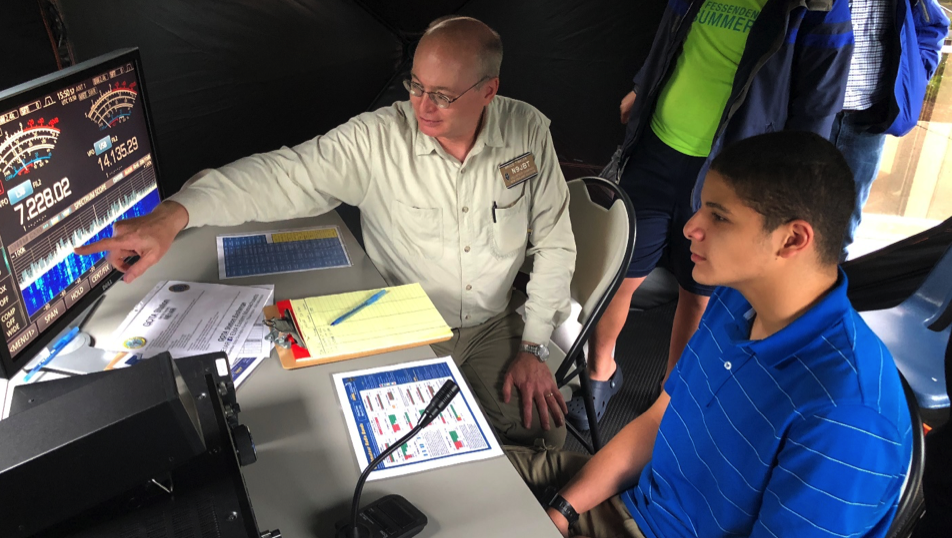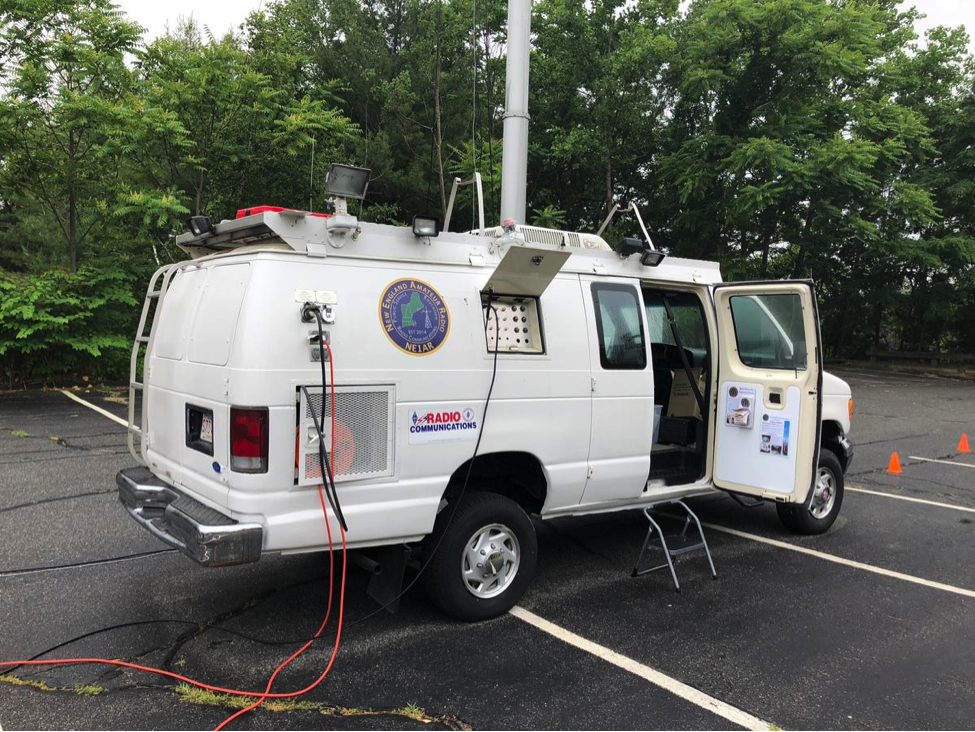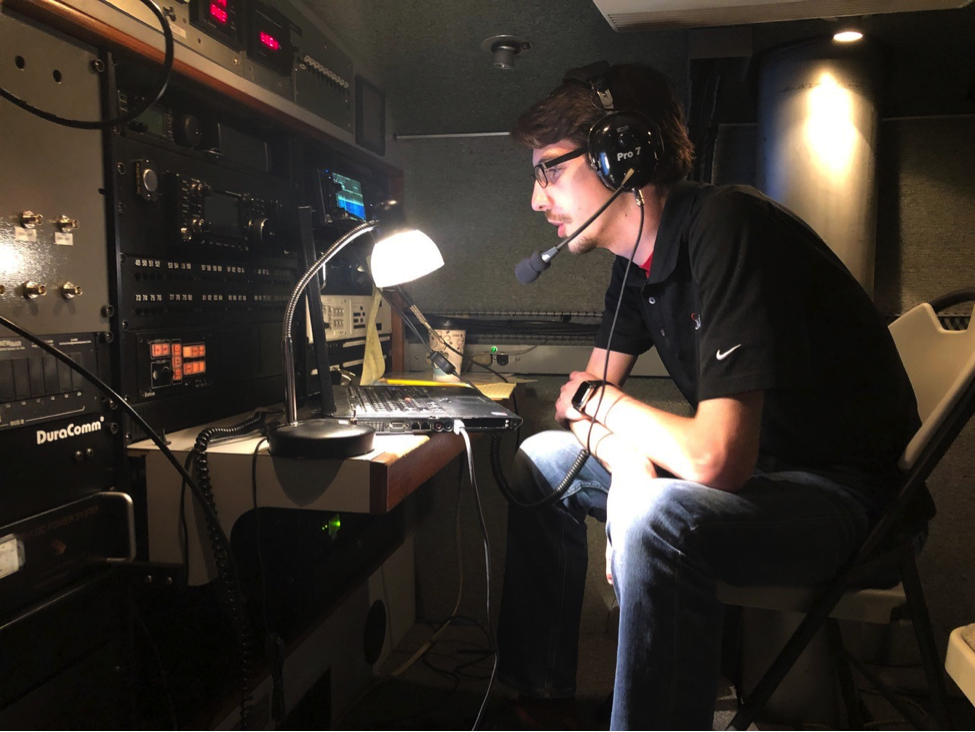How time does fly. It seems like just last week I made a post about my Field Day adventures in and around the Atlanta area. I explored the concept of Field Day as Amateur Radio’s open house and spending time with several different groups to learn what makes Field Day special for them. In truth, of course, it’s been a full 12 months and yet another Field Day is in the log. This year, I took Field Day on the road and spent the weekend with a marvelous group of young men and women up in the Boston, Massachusetts area.
I landed in Boston on Friday morning and made fast tracks towards my destination: New England Sci-Tech. This is a STEM education and Maker Space located just outside of town in a suburb called Natick. I had learned about Sci-Tech and their youth Amateur Radio club, Sci-Tech Amateur Radio Society or STARS, from a friend earlier in the year. I reached out to the facility and they were kind enough to agree to let me join them for the event.
As I walked through their front door, I was greeted by a host of friendly faces, chief among which was Bob Phinney, K5TEC, the president of New-England Sci-Tech. Bob proceeded to give me the full tour of his facility and, while we were walking around, he made a great point that would become the primary theme for the weekend. You see, Bob believes, correctly in my opinion, that Amateur Radio is the ultimate STEM activity.
STEM, for those unfamiliar with the term, stands for Science, Technology, Engineering, and Mathematics. Those four topics are fundamental building blocks for research, development, and innovation. Instilling a passion for them in our youth is an absolute necessity if we want to continue pushing the bounds of human knowledge and understanding. How, though, do we make these topics appealing in a world with so many other distractions vying for time and attention. The answer, or at least one answer, is through Amateur Radio.
Think about it. Science, Technology, Engineering, Mathematics. What activity can dovetail perfectly into any of these four avenues? Amateur Radio.
Science: Our hobby is chock full of scientific interest, from atmospheric sciences informing us about propagation, band conditions, and even to physics informing us about how our newly built antenna might resonate.
Technology: I could go on for hours about the new advancements that SDR technology is bringing to the Amateur Radio table with products like the IC-7300, IC-7610, and the new IC-9700, but that’s a different blog post maybe in the future.
Engineering: Designing and building antennas, or modeling your antenna array for best performance during the big contest. Even laying out your shack for ease of use and accessibility is an engineering exercise.
Mathematics: Math is the core of all of the above and is certainly the most commonly applied of the bunch in our hobby. Good luck figuring out how long that dipole should be without a little math sprinkled in!
The members of STARS take all of these topics to heart and apply them to their passion for Amateur Radio. Most of the STARS team that I met over the weekend are involved in other activities at New England Sci-Tech, a couple have even graduated school and recently gone off to careers in the RF communications industry. The Sci-Tech facility offers spaces for pursuing interests in astronomy, woodworking, 3D printing, and aerospace projects among others. Right in the middle of it all though is the radio room- the place where it all comes together.
For Field Day, however, the radios came out of the radio room and spent the weekend with us outside. We operated as a 3A. We had dedicated stations on 20, 40 and 80 meters, two IC-7610s and one IC-7300, as well as an IC-9100 for a VHF/UHF station. Finally, we had another IC-7610 serving as the GOTA station.
The setup was fantastic, we made use of retrofitted TV broadcast van with a pneumatic mast to get our 6 and 20 meter antennas in the air and then spent some time getting extendable masts raised and shooting lines up into trees for stringing up 40 and 80 meter OCF dipoles. We had a lot of antennas up in the air but thanks to a good layout and some bandpass filters we had minimal. Saturday afternoon rolled around and the contacts started rolling in.
While having a good time on the air was one of our primary goals for the weekend, education and outreach were always at the forefront of our mind. We held public visitation hours on both Saturday and Sunday afternoons with the intent of bringing in as many people as possible to experience the hobby. This was a great success and the GOTA tent was almost always filled with people anxious for their turn at the mike. It seems like every time I walked past that tent there were exclamations of “I talked to California!” or “Wow, all the way in North Dakota?” coming from excited kids and new hams.
There were presentations throughout the day as well, both from myself and others, talking about the technologies of Amateur Radio and about Amateur Radio in general. We had, as out auxiliary power source, a bicycle which could be lifted up so that the back wheel spun a motor to charge a battery. Good cardio to work off our lunches and a great learning experience for visitors. All in all, while we had a great time on the air, we had an even better one sharing the joy and passion of our hobby.
If you live in the Boston area or even if you’re just up for a visit, I would encourage you to stop by New England Sci-Tech to check out all of the great things they’re doing. Wherever you are, though, you can do your part to help promote our wonderful hobby. Work with your local schools if they’re receptive, work with your local scout troops. Do anything that you can to help the world see what we already know, that Amateur Radio is the ultimate STEM activity!
– Will




